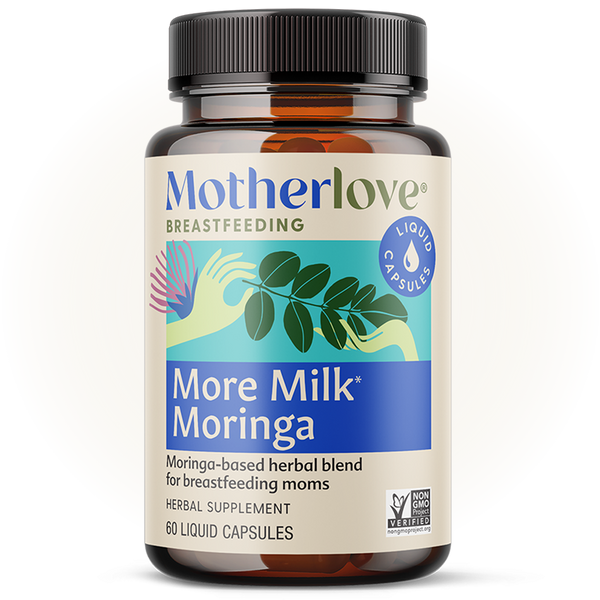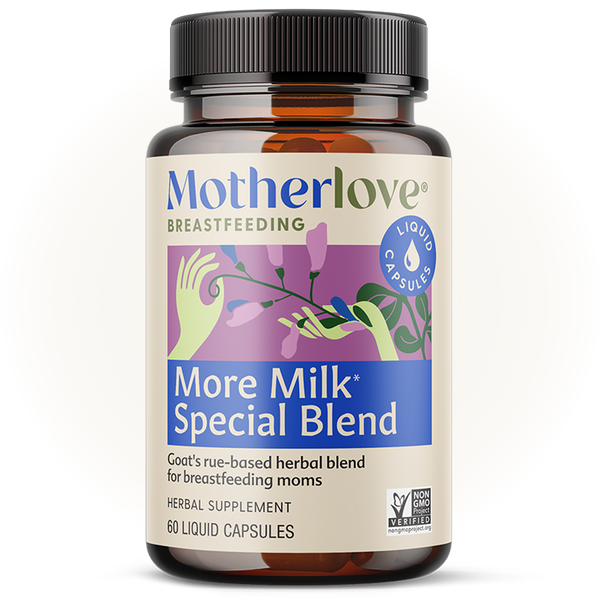If you’ve stopped breastfeeding and want to start up again, you probably can. This process is called relactation, and we’ve put together some basic information about how to do it below. Relactating can be a lot of work, but very worth it!
What is relactation?
Relactation is the process of resuming breastfeeding after a period of no breastfeeding or very little breastfeeding.
What are my odds of successfully relactating?
There is little research on relactation, but the available studies strongly suggest that, with proper support, most mothers can partially or fully relactate. But we want to point out one important factor: Keep in mind that in most of these studies mothers received help in relactating from trained breastfeeding support people.
What factors will influence my success in relactating?
The research suggests that you may have better chances at full or partial relactation if you have:
- A younger baby
- A shorter gap between weaning and relactating (sometimes called a “lactation gap”)
- The willingness of the baby to take the breast
- Having assistance from trained breastfeeding support people
Remember that each mother/baby pair is different, and relactation may still be possible even you don’t meet the most favorable criteria.
How long will it take?
Nancy Mohrbacher, IBCLC, in Breastfeeding Answers Made Simple, recommends that mothers plan for relactation to take one month.
How should I measure success? What goals should I set?
You may want to spend some time reflecting on your motivation for relactating. Is it important to you to provide as much breastmilk as you can? To have the feeling of closeness you had with breastfeeding? There is no right or wrong way to set goals for relactation. And you may not want to set any goals at all.
Interestingly, one survey of relactating mothers found that “milk production was less often a goal and, when so specified, it was likely to influence the mother to evaluate her experience negatively and to result in difficulty in achieving a total milk supply.”
How do I relactate?
There are two related parts to relactation: bringing back a milk supply and bringing the baby back to the breast. And while you’re working on these goals, you’ll want to make sure that your baby continues to thrive. But the first, and probably the most important thing, is to seek some support.
Get support. We strongly recommend seeking out sources of support for this process. As we note above, the mothers in the studies cited above were typically receiving skilled help with relactation, and this may have influenced their success rates. You may want to consult with a lactation consultant (IBCLC), La Leche League leader, a breastfeeding-friendly pediatrician, or other trained breastfeeding support person (see links at the end of this guide for sources of support). Trained help is important, but don’t underestimate the power of support from other moms, family, and friends.
Explore what happened. It helps to explore why breastfeeding stopped. You may find it helpful, particularly in cases of unexplained milk supply problems or behavior in your baby, to explore these issues with a lactation consultant (IBCLC). You’ll find a link to find one at the bottom of this guide.
Bring back your milk supply.
Empty your breasts frequently. If your baby is willing to nurse, feeding frequently is the single most effective thing you can do. Aim for at least 10-12 feedings every 24 hours. Feed on both sides, and feed long enough to drain each breast well. If your baby isn’t taking the breast, or is doing so infrequently, use a pump to stimulate your milk supply. Ideally you should pump at least every three hours (though many mothers find it more manageable to take a break at night). Double pumping provides more stimulation than pumping one side at a time.
Ensure effective feedings. If your baby is nursing, make sure that he or she is taking the breast deeply into the mouth, and that you feel comfortable when nursing. A shallow latch and/or pain can mean that your baby isn’t feeding as effectively as possible. Get help correcting this from a trained breastfeeding support person.
Pump after feedings. If your baby is nursing, try pumping after feedings with a hospital grade breast pump. Since milk supply seems to be calibrated based on how empty your breasts get, pumping after feedings can be an effective way to increase milk supply.
Use breast compression. When nursing and/or pumping, use breast compression to fully empty your breasts and keep your baby engaged while nursing. This is a particularly effective way to get good feedings with a baby who is sleepy at the breast.
Consider a supplemental nursing system (SNS). Using an SNS allows a baby to receive formula supplements at the breast while stimulating your milk production by nursing. There is also some evidence that substituting feeding methods other than bottles – such as cup, spoon, SNS – increases the chances of relactation success.
Use the power of skin. Holding your baby skin-to-skin (your baby in just a diaper on your bare chest) boosts your milk-making hormones. And it feels great!
Take a galactagogue. There are both herbal supplements and prescription medications that support milk supply. Consult with a lactation consultant and/or your health care provider about which may best suit your needs. Motherlove suggests starting with goat's rue for herbal support.
Bring your baby back to the breast.
Get skin-to-skin. Skin-to-skin contact is immensely powerful in establishing breastfeeding, and it can significantly aid the process of relactation. Hold your baby (wearing only a diaper) on your bare chest as often as you can. You may find that he or she begins to self attach (see next point).
Use Baby-led Breastfeeding, Laid Back Breastfeeding positions, and co-bathing. Research is increasingly pointing toward the importance of babies’ innate feeding instincts in the establishment and re-establishment of breastfeeding. Babies are able to crawl, scoot, and wiggle their way to the breast all on their own from birth, and new research is showing that babies retain this instinct long after the newborn period. Baby-Led Breastfeeding involves positioning babies in a way that allows them to crawl to the breast. Biological Nurturing, or Laid-Back Breastfeeding, involves reclining to breastfeed. See more about the Laid Back Breastfeeding position and its ability to take advantage of babies feeding reflexes. Some lactation consultants have also found that taking baths with your baby (called remedial co-bathing) can help in re-establishing breastfeeding.
Ensure a good latch. As mentioned above, a deep latch will allow your baby to receive the most milk and will keep you comfortable. Seek help from a trained support person if getting a good latch poses a challenge.
Use breast compression. Keep your baby engaged at the breast by squeezing your breast when your baby is nursing. This is particularly effective if your baby is sleepy at the breast.
Consider a nipple shield. Some babies who have had many bottle feedings will nurse if the mother uses a nipple shield, as it makes the breast feel more like a bottle. For some babies, it can be hard to wean from nipple shields. Seek help from breastfeeding support person for assistance in using and weaning from a nipple shield.
Use a supplemental nursing system. SNS can persuade babies to return to the breast because they get a greater flow when they nurse. And as noted above, they can help increase milk supply by keeping all sucking at the breast. Seek help from breastfeeding support person for assistance in using one.
Focus nursing around strategic times. Try nursing when supply is higher, such as nighttime and morning. Offer the breast for comfort when you know that your baby is already full, or when your baby is asleep.
Consider pre-feedings. Some babies will nurse if the “edge” has been taken off their hunger. Try giving your baby an ounce of formula just before attempting a feeding at the breast.
Ensure that your baby continues to thrive. If you are reducing formula supplements while relactating, we’d suggest reducing formula supplements gradually. Kelly Bonyata, IBCLC, of kellymom.com recommends initially reducing formula supplements by one ounce per day (not per feeding). We also recommend doing frequent weight checks to ensure that your baby continues to grow normally. Checking for swallowing and monitoring diaper output can also provide some information about your baby’s intake.
What are some good resources for more information and support?
- International Lactation Consultants Association. Find a lactation consultant (IBCLC) using their zip code finder.
- La Leche League can provide support through leaders and group meetings.
- The Breastfeeding Mother’s Guide to Making More Milk. An outstanding book on increasing milk supply.
- Lowmilksupply.org. Comprehensive online source of information on increasing milk supply.
- Relactation: review of experience and recommendations for practice, World Health Organization






